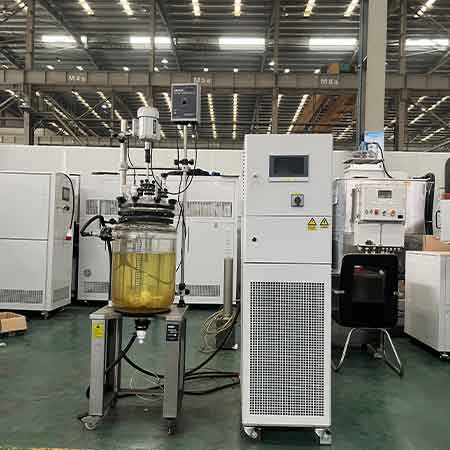The reaction kettle temperature control unit is a kind of equipment used for cooling and heating with the reaction kettle. It can provide a reaction environment under various temperature and pressure conditions, and largely meets the needs of the laboratory for various chemical reactions and material synthesis. Below are some common applications for this device.
1. Application introduction of chemical reaction
During the chemical reaction, the absorption and heat generation of the reactants will cause changes in the temperature and pressure inside the reactor. The reactor temperature control unit can control and stabilize different reaction temperatures, and it can also be used for some chemical reactions that require high pressure, such as hydrogenation reactions. In addition, the substances produced after the reaction can also be collected by cooling at low temperature, so that the reaction process can be controlled.

2. Application introduction of material synthesis
The reaction kettle temperature control unit organically combines the process of high temperature and low temperature kettle, which can make the temperature range of material synthesis wider, and can synthesize materials with different properties under different temperature conditions and reaction media. For example, it can be used to synthesize high-performance materials such as alumina powder and thermoplastic resin, and has a wide range of application values in its production and research and development process.
3. Application introduction of microbiology research
The reactor temperature control unit is also commonly used in microbiological research, such as fermentation, ion exchange, preparation of colloids, growth of microorganisms, etc. Especially in the preparation of high-value compounds, using this device can synthesize a large number of microbial products under more efficient conditions.
To sum up, the reactor temperature control unit is a multifunctional chemical reaction equipment that can meet the needs of laboratories for chemical reactions and material synthesis at different temperatures and pressures, and can also be used for microbiological research.
 LNEYA
LNEYA
 简体中文
简体中文


















































































